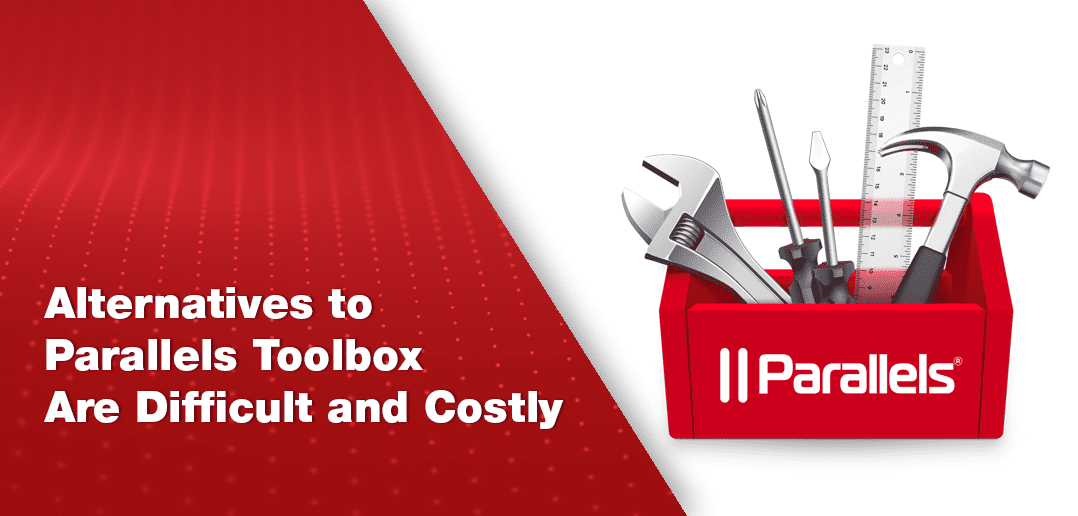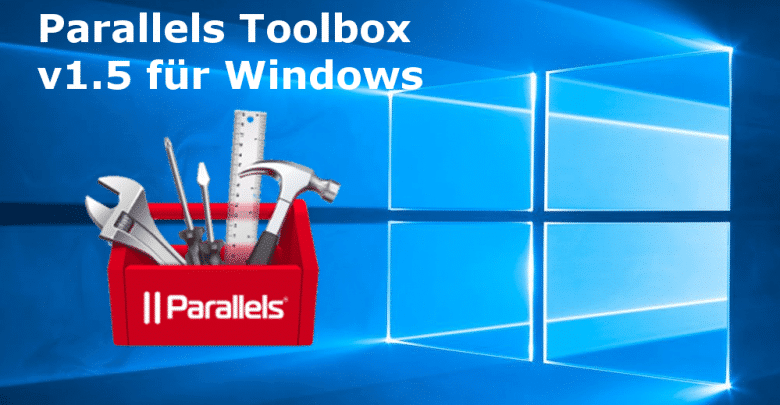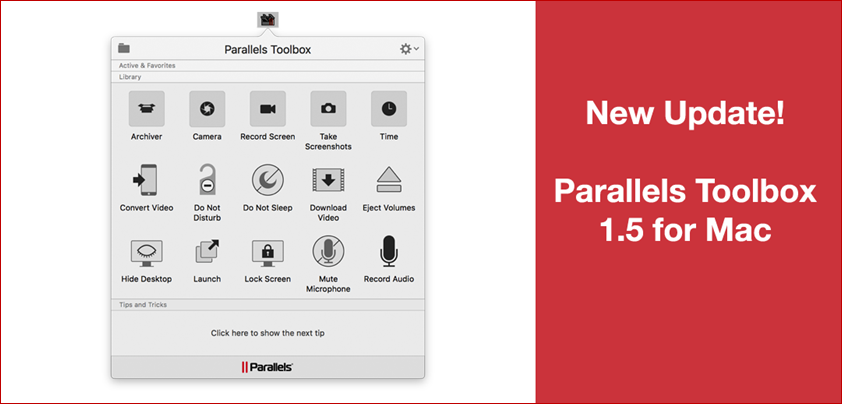
- #PARALLELS TOOLBOX VERSION 3.1.1 SOFTWARE#
- #PARALLELS TOOLBOX VERSION 3.1.1 CODE#
- #PARALLELS TOOLBOX VERSION 3.1.1 LICENSE#
Since 2001, Open Babel has been developed and substantially extended as an international collaborative project using an open-source development model.
#PARALLELS TOOLBOX VERSION 3.1.1 CODE#
In 2001, OpenEye decided to rewrite OELib in-house as the proprietary OEChem library, so the existing code from OELib was spun out into the new Open Babel project.
#PARALLELS TOOLBOX VERSION 3.1.1 SOFTWARE#
Open Babel has its origin in a version of OELib released as open-source software by OpenEye Scientific under the GPL (GNU Public License). We will discuss the frameworks for file format interconversion, fingerprinting, fast molecular searching, bond perception and atom typing, canonical numbering of molecular structures and fragments, molecular mechanics force fields, and the extensible interfaces provided by the software library to enable further chemistry software development. It can handle reading, writing, and interconverting over 110 chemical file formats, supports filtering and searching molecule files using Daylight SMARTS pattern matching and other methods, and provides extensible fingerprinting and molecular mechanics frameworks. It provides both ready-to-use programs as well as a complete, extensible programmer's toolkit for developing cheminformatics software. It allows anyone to search, convert, analyze, or store data from molecular modeling, chemistry, solid-state materials, biochemistry, or related areas. We outline for the first time, the development and use of the Open Babel project, a full-featured open chemical toolbox, designed to "speak" the many different representations of chemical data. Consequently, a frequent problem in computational modeling is the interconversion of molecular structures between different formats, a process that involves extraction and interpretation of their chemical data and semantics. While attempts have been made to provide a standard format for storing chemical data, including most notably the development of Chemical Markup Language (CML), an XML dialect, such formats have not yet achieved widespread use.


Other types of representations require specification of atom types on the basis of a specific valence bond model, inclusion of computed partial charges, indication of biomolecular residues, or multiple conformations. Hydrogen atoms are frequently omitted from x-ray crystallography due to the difficulty in establishing coordinates, and are often ignored by some file formats as the "implicit valence" of heavy atoms that indicates their presence. For example, line notations like Daylight SMILES do not offer coordinate information, while crystallographic or quantum mechanical formats frequently do not store chemical bonding data. Such representations focus on specific atomic or molecular information and may not attempt to store all possible chemical data. The history of chemical informatics has included a huge variety of textual and computer representations of molecular data.
#PARALLELS TOOLBOX VERSION 3.1.1 LICENSE#
It is freely available under an open-source license from. For developers, it can be used as a programming library to handle chemical data in areas such as organic chemistry, drug design, materials science, and computational chemistry. In addition, it provides a variety of useful utilities from conformer searching and 2D depiction, to filtering, batch conversion, and substructure and similarity searching. Open Babel presents a solution to the proliferation of multiple chemical file formats.

We detail the implementation of Open Babel, describe key advances in the 2.3 release, and outline a variety of uses both in terms of software products and scientific research, including applications far beyond simple format interconversion. The need to represent such a wide variety of chemical and molecular data requires a library that implements a wide range of cheminformatics algorithms, from partial charge assignment and aromaticity detection, to bond order perception and canonicalization.

Open Babel version 2.3 interconverts over 110 formats. We discuss, for the first time, Open Babel, an open-source chemical toolbox that speaks the many languages of chemical data. While standard interchange formats exist (for example, Chemical Markup Language) and de facto standards have arisen (for example, SMILES format), the need to interconvert formats is a continuing problem due to the multitude of different application areas for chemistry data, differences in the data stored by different formats (0D versus 3D, for example), and competition between software along with a lack of vendor-neutral formats. A frequent problem in computational modeling is the interconversion of chemical structures between different formats.


 0 kommentar(er)
0 kommentar(er)
